





Phalaenopsis or moth orchids, are among the easiest and most popular orchids to grow as house plants. This article will explain why they are so popular and how you can grow them inside to provide year-round exotic beauty.
(Editor's Note: This article was originally published on February 20, 2010. Your comments are welcome, but please be aware that authors of previously published articles may not be able to promptly respond to new questions or comments.)
One of the most popular orchids to grow as houseplants are Phalaenopsis, commonly called moth orchids. This orchid is among the most easily obtained. Not only are they standards at many flower shops, but the large box stores like Walmart, Lowe's, Home Depot, etc, sell Phalaenopsis on a regular basis. Even grocery stores deal with this exotic, yet relatively easily-grown orchid. If you have never grown an orchid but would like to try, then Phalaenopsis are the way to go.
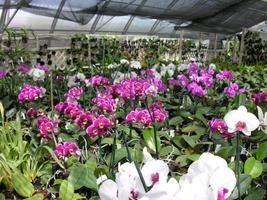
Phalaenopsis hybrids growing in a commercial orchid nursery
It is not surprising that Phalaenopsis orchids are so popular. Plants are not that large so do not require much space. Their leaves are quite tidy (many orchids have rather floppy or unattractive foliage). They flower sequentially over several months; individual flowers can last 2-3 months! Old flower stems can often re-bloom and healthy plants generally produce new flower spikes every year. If all goes well, they are nearly ever-blooming.
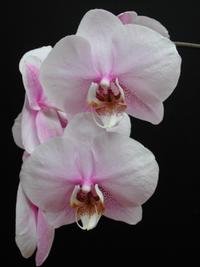
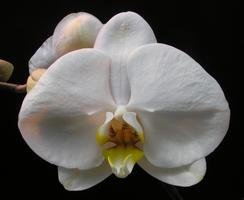
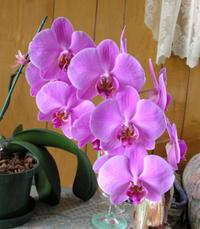
The large white and pink hybrids are among the most popular
No orchid is fool-proof and Phalaenopsis are no exception. However, as far as orchids go, they require less fuss than many. Essentially, if you can successfully grow African violets, then you should have no problems with Phalaenopsis as they have similar growing requirements. In regards to light, they need bright conditions but not baking afternoon sun. Early morning or late afternoon sun is ideal, hence east and west exposures are best. In northern or cloudy regions, they can tolerate southern exposure but provide a little shade during sunny afternoon periods in summer. Comfortable room temperature for us are also suitable for Phalaenopsis. Day temperatures 20-25 C (70-80 F) with nights 15-18 C (60-65) are perfect. In fact, cooler night temperatures in autumn will help stimulate new flower spikes. Fertilize them weakly, weekly; I use 1/4 strength 20-20-20 or 15-30-15. Watering is often the most tricky part to maintaining Phalaenopsis. They do not like to be soggy nor do they like being too dry. As a rule, once a week is fine. During cloudy cool weather, every 10 days might be OK while during warm spells or if exposed to drier, winter-heated homes, every 5 days might be needed. Humidity should be 50-70%. You may grow the plants over water-filled trays to help raise the humidity, but do not let the pots sit in water.
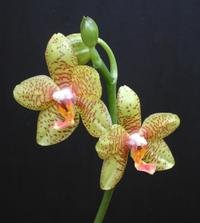
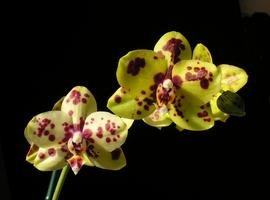
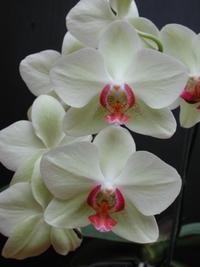
More exotic are the yellow spotted types and green-flowered
Most orchids, including Phalaenopsis, are epiphytic in the wild. They grow perched on tree branches with their roots clinging to the tree bark or dangling in the air. In pot culture, they are grown either in a bark-based media or sphagnum moss. It is important that the media be well-aerated. As the media starts to decompose, the roots can be adversely affected and plants can go downhill rapidly. I dislike sphagnum moss for that reason as it can decompose quite suddenly and rapidly. Bark-based media lasts longer and gives you more time to see signs of root problems before it REALLY becomes a problem. As a rule, the are best repotted every 2 years. Do not be alarmed to see new roots dandling out of the pots; they are simply trying to do what they would do in nature.
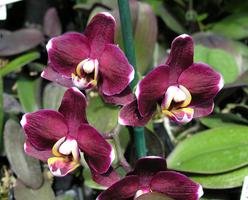
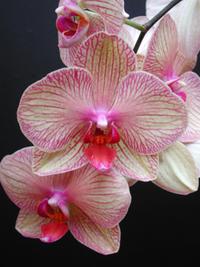
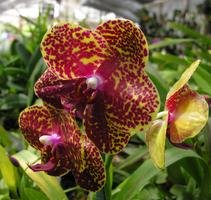
Some colour combinations are quite striking
While Phalaenopsis flowers do not vary tremendously in shape (they are essentially round to star-shaped), they can vary greatly in size from a little over an inch to over 5 inches. The colour range is vast with every colour except blue. Many have contrasting spots or stripes. Some are even highly fragrant. A few species and hybrids even have mottled or variegated leaves, lending them attractiveness even when out of bloom. The re-blooming capacity of Phalaenopsis are one of their main selling features. As mentioned, plants bloom sequentially. Well-grown specimens may have 20 or more flowers on a single stem. Newer hybrids have been bred to produce branching flower stems, making the displays even more impressive. After the flowers fade, wait a short while to see if the spike elongates to produce more flowers. The smaller-flowered and fragrant types often do this. If no further flower buds are seen developing, then you have another alternative. If you look at the flower stem below where the flowers were developed, you will see green bumps scattered along the stem. From the base of the spike, count upwards the first three GREEN bumps (botanically called nodes). Cut the stem just above the third node. If all goes well, a new branch will develop from this node, producing another spray of flowers in a few months.
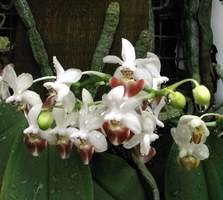
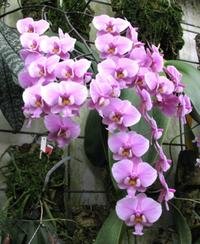
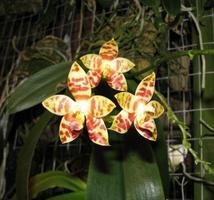
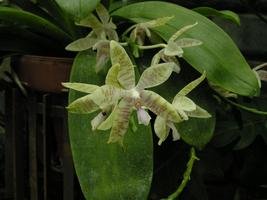
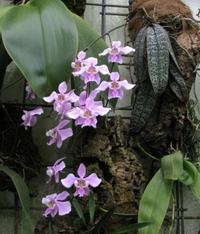
Above is a collection of 'wild' Phalaenopsis species: P. parishii (top left), P. schilleriana (top middle), P. amboinensis (top right), P. hieroglyphica (bottom left) and P. sanderiana (bottom right)
Phalaenopsis, as a genus, hail from SE Asia. There are about 50 species. A close relative is Doritis pulcherrima, with long sprays of numerous small, magenta-purple flowers. This later species has been hybridized with Phalaenopsis to form the man-made genus called Doritaenopsis. Generally, the species are only available from specialist orchid nurseries and are oftentimes, a little more challenging to grow than the modern-day hybrids. However, once you get the hang of growing the hybrids, the species are well recommended.
Copyright © www.100flowers.win Botanic Garden All Rights Reserved